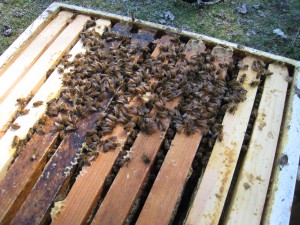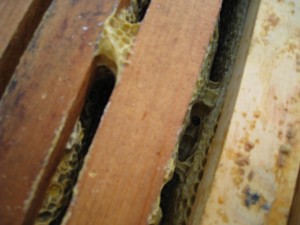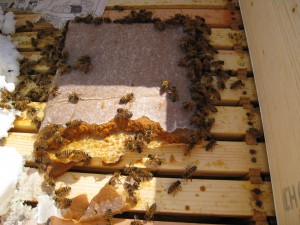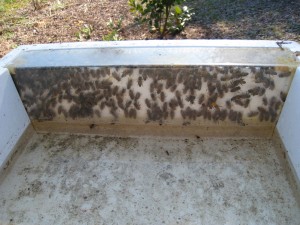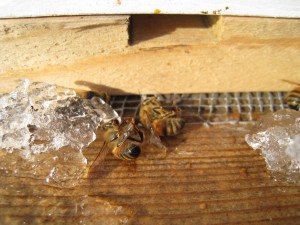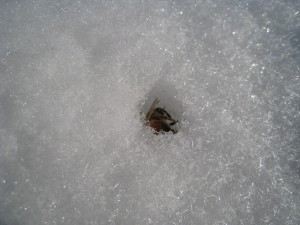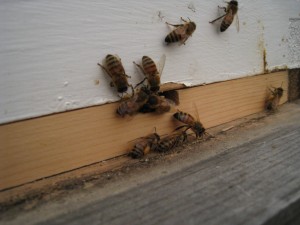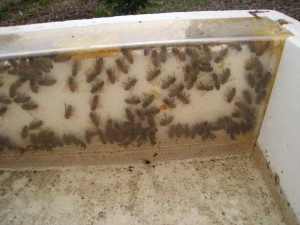To Feed or Not To Feed
We had a really great talk on the winter cluster of the honey bee at the East Richmond Beekeeper’s Association meeting last night. Ann Harman of the Virginia State Beekeepers Association came down from the western part of the state to give us an overview of what the bees do from November and onward through the colder months of the year.
Before Ms Harman started her talk, several folks asked about feeding their bees. Should you keep feeding your bees if they are still taking it? When do you stop? Like anything with bees, the answer largely depends on the goals of the beekeeper, with environment taking a close second.
My primary goal is to raise a bee that can survive (well, I should say thrive) in my apiaries despite my intervention. By intervention, I refer to all things that I do as a beekeeper (like opening the hives to look at them, taking their honey, stealing their brood to catch a swarm or whatever.) So, my bees need to be able to handle the mites and other diseases that come along (‘me’ being one of them) and they need to be able to make it through the Winter without my help.
Without any defects (a term from my job that basically means unexpected results/consequences, like a drought, me killing a queen by accident, me taking too much honey, the hive falling apart or some other bee experiment gone awry), I expect any hive that is more then 1 year old to make it through the Summer and Fall without any chemical treatments and through the Winter without any feed.
Some might read the previous paragraph and say ‘that fool won’t have bees for long’, and they may very well be right (well, I will always have bees, but I may lose all of the ones that I currently have, I suppose.) But, I think it is more probable that I will lose a few. I might even lose half of my hives. For me, it is a loss that I am willing to bear. I believe that the ones that do survive are my proven lines. Each year (past year 1) that a hive makes it without help is further proof to me that this line is a valuable one.
By feeding the bees, I am simply helping an otherwise weak gene pool to make it to the next year. I would rather let them sort it out themselves and end up with a few strong hives then a mix of weak and strong. So, I am not feeding any hives that are older then 1 year old. In fact, of all of my hives, I am actually only feeding my Nucs that I am overwintering at this point.
But, as mentioned at the start, everyone does it differently and I have no beef with anyone who does feed. The point of this post is just to point out that your goals really drive that, not the bees. It should also be noted that I do manage my hives in other ways that do not include chemical treatment (cycling out old comb, swarm management in Spring, splits, nuc creation, etc…) I simply rely on strong stock to fight off the mites and build up their own honey stores. In closing, the observant will note that I did not mention anything about honey output. The vast majority of folks manage their bees primarily for honey output. It is likely that my bees will not necessarily be the highest honey producers (I do not select for that trait at the moment.) They will give me all of the honey that I want and might give me record crops, but I doubt that my current strategy will result in all of my bees being super producers. Maybe in a decade or so I will have the base survival stock that I want and can then start to manage for that!

